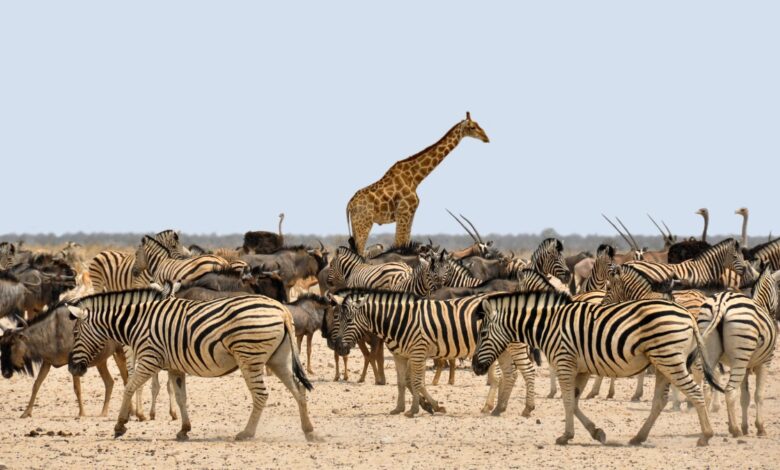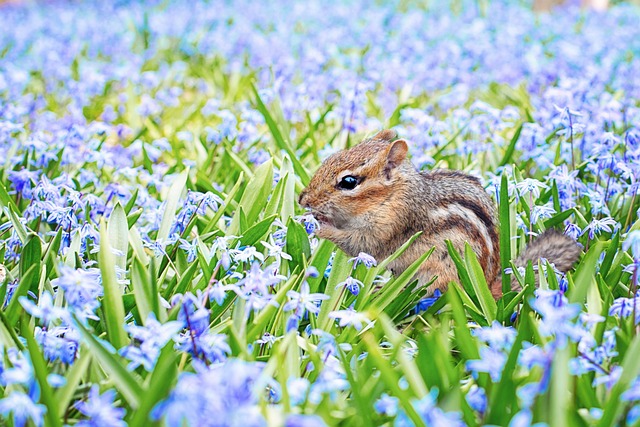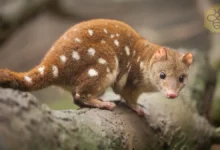Mammals: Definition, Types, Classification, Characteristics, List, FAQs, and More

Mammals are a diverse group of animals found in various ecosystems around the world.
Table of Contents
Definition
Mammals are a class of vertebrate animals characterized by specific traits that set them apart from other animals. These traits include being warm-blooded, having mammary glands that produce milk, possessing hair or fur on their bodies, and giving live birth to their offspring.
Types
Mammals can be broadly classified into three main groups:
• Monotremes
Monotremes are the most primitive group of mammals. They are unique in that they lay eggs instead of giving live birth. Examples of monotremes include the platypus and echidnas.
• Marsupials
Marsupials are mammals that give birth to relatively undeveloped young, which then continue to develop and nurse in a pouch. Kangaroos, koalas, and opossums are examples of marsupials.
• Placentals
Placental mammals form the largest group of mammals and include humans, dogs, cats, horses, and whales, among others. Placentals have a more advanced reproductive system, where the fetus develops internally and is nourished by a placenta before being born.

Classification
Mammals are further classified into various orders based on their evolutionary relationships and anatomical features. Some of the main orders include Monotremata (monotremes), Marsupialia (marsupials), and Eutheria (placentals).
Characteristics
Mammals possess several distinctive characteristics that contribute to their success and adaptability:
• Warm-Bloodedness
Mammals are warm-blooded creatures, meaning they can regulate their body temperature internally, irrespective of the external environment. This adaptability enables them to thrive in various habitats worldwide.
• Mammary Glands
All mammals possess mammary glands, which produce milk to nourish their young. This unique adaptation ensures the survival and growth of their offspring.
• Hair or Fur
Mammals have hair or fur covering their bodies, providing insulation and protection. The texture, color, and thickness of the hair can vary greatly among different mammal species.
• Diaphragm
The presence of a diaphragm, a thin muscle that separates the chest cavity from the abdominal cavity, enables mammals to breathe efficiently by expanding and contracting the lungs.
• Four-Chambered Heart
Mammals have a four-chambered heart, which facilitates the efficient circulation of oxygenated blood throughout their bodies.
• Internal Fertilization
Most mammals reproduce through internal fertilization, where fertilization occurs within the female’s body. This reproductive strategy increases the chances of successful fertilization and offspring survival.

List of Mammals
Here is a list of some mammals representing their diversity:
Humans (Homo sapiens)
Dogs (Canis lupus familiaris)
Cats (Felis catus)
Horses (Equus ferus caballus)
Whales (Cetacea)
Elephants (Elephantidae)
Tigers (Panthera tigris)
Lions (Panthera Leo)
Giraffes (Giraffa camelopardalis)
Dolphins (Delphinidae)
Cows (Bos taurus)
Chimpanzees (Pan troglodytes)
Gorillas (Gorilla)
Bears (Ursidae)
Bats (Chiroptera)
Please note that this is just a small selection from the vast array of mammal species.
FAQs
Here are answers to some frequently asked questions about mammals:
Can mammals lay eggs?
Most mammals do not lay eggs. However, there is a small group of mammals called monotremes that do lay eggs. Examples include the platypus and echidnas.
How many species are there?
There are approximately 6,400 known species of mammals, and new species are still being discovered.
What is the largest mammal on Earth?
The blue whale holds the title of being the largest mammal on Earth. It can reach lengths of over 100 feet and weigh up to 200 tons.
What are some examples of endangered mammals?
There are numerous endangered mammal species worldwide. Some examples include the Sumatran orangutan, Amur leopard, black rhinoceros, and Sumatran tiger, among others.

Conclusion
Mammals are a diverse and fascinating group of animals that exhibit a wide range of characteristics and adaptations. Their warm-bloodedness, mammary glands, hair or fur, four-chambered heart, and internal fertilization are just some of the unique features that make them remarkable. Understanding the definition, types, classification, and characteristics of mammals allows us to appreciate the diversity and complexity of life on Earth.


